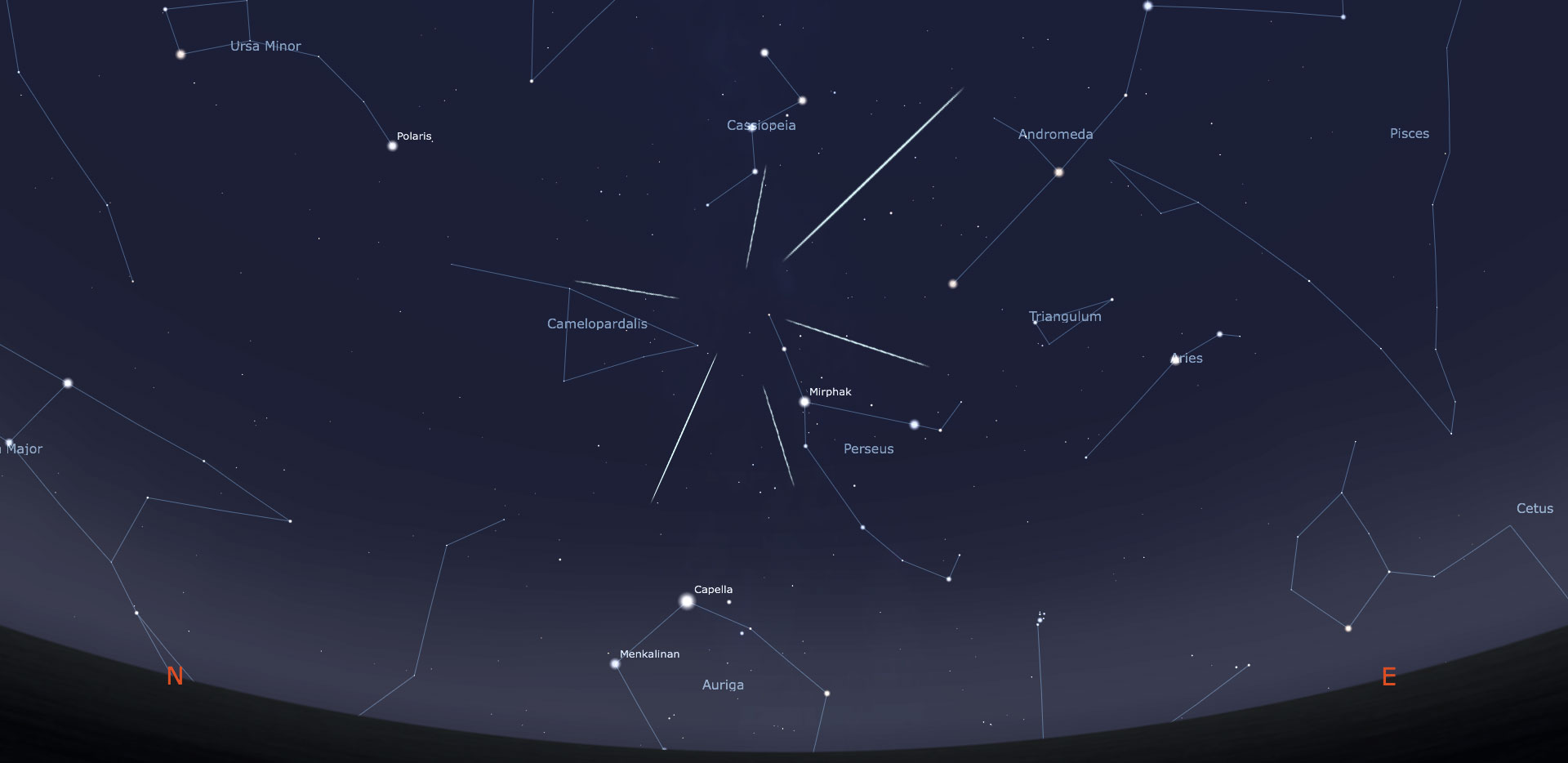
Perseids
See more info on the 2015 Perseid Meteor Shower.
The particles we see as the Perseid meteor shower as they plunge into the Earth’s atmosphere are objects usually no bigger than a thumbnail that were stripped off Comet 109P/Swift-Tuttle’s surface as it encountered the solar wind during each perihelion (close approach to the Sun). Its last perihelion occurred in 1992, and its next perihelion won’t be until July 2126 (a 133 year orbit). These particles are deposited in “streams” throughout the comet’s orbit about the Sun. When the Earth passes through this stream of particles we experience a display of shooting stars centered on August 12.
The Perseids are so named because they appear to radiate from an area of sky, called the radiant point, in the constellation Perseus. Also, it is perhaps the best known meteor shower seen from the northern hemisphere because more folks spend time outdoors during the summer months. Perseus is well up in the northeast sky after midnight. If you can see a pattern of stars that looks like a sideways “M” or “W” (that’s Cassiopeia), Perseus is below it so you’re looking in the correct direction. You know you’ve seen a Perseid if you can trace the path of a meteor back to the radiant point.
Begin your observing program around midnight. Between then and dawn’s early light is when the peak activity should occur. Gradually follow the radiant across the sky. As Perseus rises higher into the sky, the number of meteors will increase. For fun, keep a written or mental count of meteors per hour. You should note an increase as the morning progresses. Also, observe with a friend so you won’t fall asleep during the possible inactive gaps.
If many meteors appear to be coming from another area of sky, then shift your gaze and concentrate on that sky region. Still, it doesn’t hurt (much) to constantly scan as much sky as possible without straining your neck!
The normal peak rate for the Perseids is a respectful 60 meteors per hour, but during some years that rate has risen to close to 120. That’s two per minute! These shooting stars are usually green, red or orange in color, and members of this shower are bright and often produce exploding fireballs.
And because this meteor shower has developed a second “peak” of activity up to six hours later than the traditional peak, I would suggest reading Skyscrapers’ most recent column on the times of peak activity.



